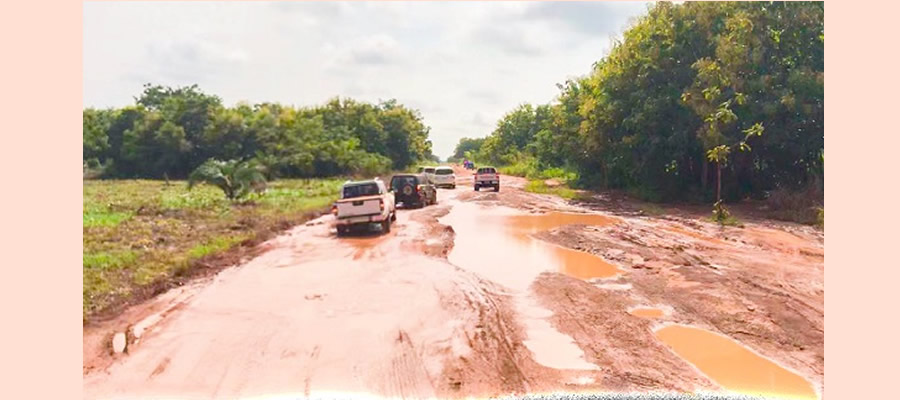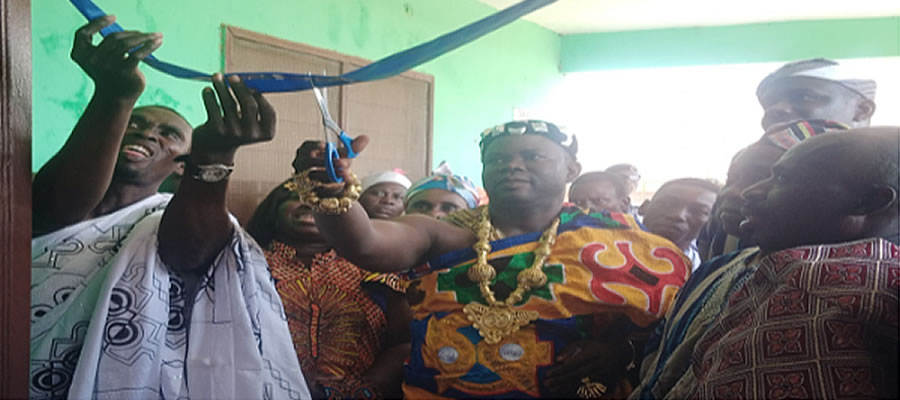

The physical features of the District are made up of the natural environment (climate, vegetation, relief and drainage), location and size. The physical and natural environment is an essential factor contributing in the socio-economic development of the District.
Location and Size
Sene West District is located in the North-Eastern corner of the Brong-Ahafo Region. The District is located between Longitude O 15’E and 15’W and Latitude 7 N and 8 30’N. It is the largest District in the region and covers an estimated landmass of 4,293.22 square kilometers (km2) which is about 10.9% of the region’s land area of 39,557.08 km2.
The Sene West District shares common boundary with Sene East District to the east which is one of the newly created Districts carved out of the then Sene District, to the North-West by Pru District which is well known for its fish market. Atebubu-Amantin District which is directly linked by a primary road from Kumasi and is well known for its yam market is the western boundary; and the District’s boundary to the South-West is the Sekyere East District whose main economic activity is farming and small scale processing of agricultural produce (cottage industries).
Relief and Drainage
The District lies within the Sene-Obosom river basin and the Volta Lake. Three major rivers, Volta, Sene and Pru surround the District. However, only their intermittent tributaries drain the District. In addition to these major rivers, there are streams which have the potential for water transport, irrigation and domestic use especially during the dry season.
Climate
The District, which falls between the wet semi-equatorial and tropical continental climatic regions of Ghana, experiences two seasons namely: a rainy season and a long dry season. The rainy season normally begins in April and ends in October, giving way to the dry season from November to March. Generally, rainfall ranges between 900mm - 1,089mm.
The District is characterized by high temperatures throughout the year with a mean annual temperature of about 27ºC. The relative humidity of the area is quite high, averaging over 75 percent. These climatic conditions adversely affect agricultural activities in the District. The Volta Lake and the Sene River could therefore be harnessed through irrigation schemes to assist farmers and thus raise agricultural production for domestic consumption and export.
Vegetation
The vegetation of the Sene West District is predominantly Guinea Savannah Woodland with high undergrowth and scattered trees. The major trees are Shea butter tree, Dawadawa, Baobab, Mahogany, Papao, Senya, Kane, Onyina, Kubre, Kyenkyen, Watapor, Wama and Neem. Some of these trees are of economic and domestic value. For instance the Shea Butter tree can be used for medicinal purposes, cosmetic skin preparations and food.
The Onyina tree serves as timber for carpentry and building purposes. Generally, tall grasses such as the elephant grass and varieties of anthropogenic species coexist with these trees in the District.
Date Created : 11/20/2017 2:49:19 AM









 facebook
facebook
 twitter
twitter
 Youtube
Youtube
 +233 593 831 280
+233 593 831 280 0800 430 430
0800 430 430 GPS: GE-231-4383
GPS: GE-231-4383 info@ghanadistricts.com
info@ghanadistricts.com Box GP1044, Accra, Ghana
Box GP1044, Accra, Ghana